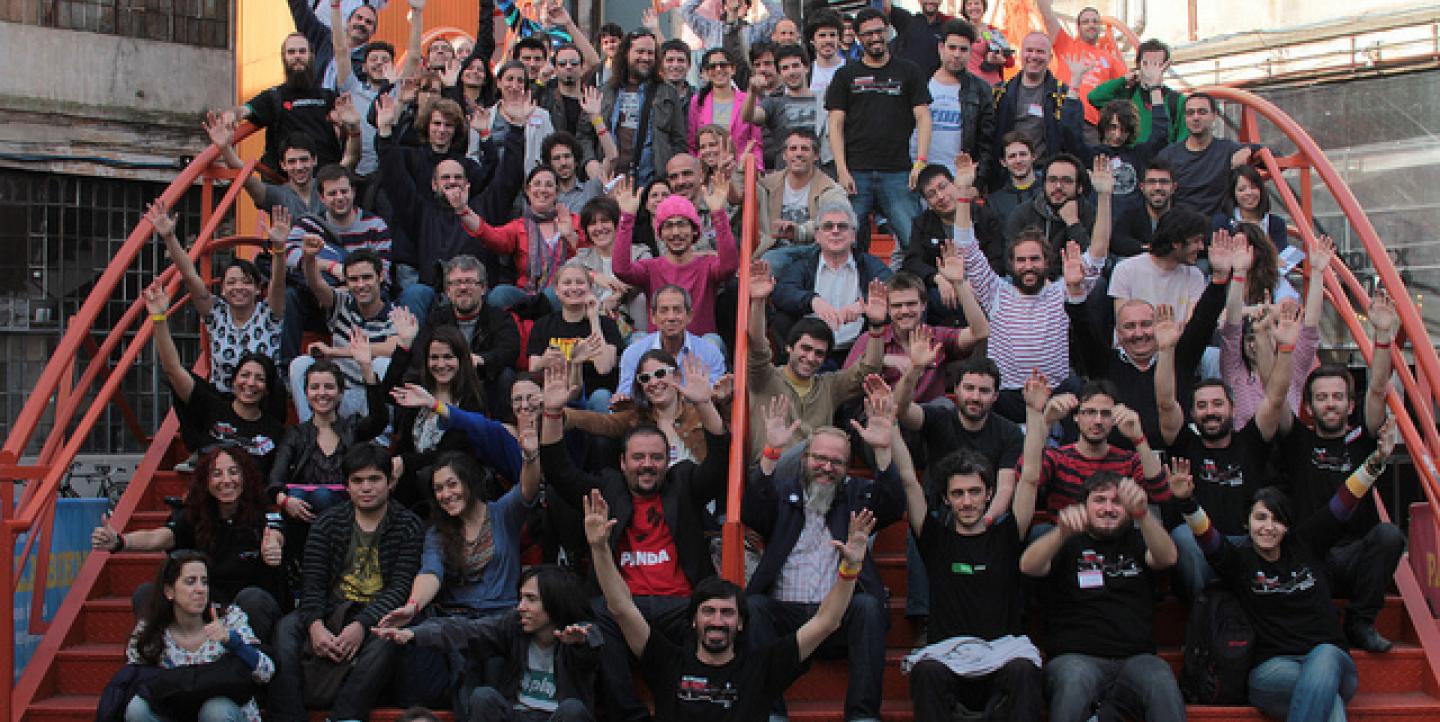In Buenos Aires, it all began with a tweet. We invited everyone who wanted to rethink journalism to our city’s first Hacks/Hackers event, and drew about 120 people.
Less than two years later, at 1,700 members strong (and growing), we’ve held more than 20 events and a Media Party with keynotes, workshops and a hackathon. Hacks/Hackers Buenos Aires has become a vibrant space for media innovation. We believe many people in Latin America would benefit from participating in Hacks/Hackers, so I'm helping drive its expansion in the region as part of my Knight International Journalism Fellowship.
Hacks/Hackers chapters across the world bring together journalists, designers and developers in meetings, workshops and hackathons. It also attracts the free software community, many NGOs in the world of open data, the government sector, entrepreneurs and investors.
Running a chapter requires a lot of energy, time and effort. It takes organizers who are excited about the idea of reinventing the future of media through inspiration, education and collaboration between journalists, programmers and designers.
Want to start a new chapter of Hacks/Hackers in your city? First, check to see if there is an active group listed here. If not, your next step is to tell Hacks/Hackers you’re interested, here. The most successful chapters are those with at least two co-organizers who combine strong development and journalism skills, and who have good contacts with local organizations and the media world. Each chapter depends on the ability of the organizers to find and cultivate local resources and build community support.
Here are some strategies that worked well for us in establishing Hacks/Hackers Buenos Aires. We think these lessons can be helpful to other chapters:
Start with your own network
Invite people you respect professionally and who might be interested in spending time with this community. Twitter was our most effective channel for promotion.
Surprise people.
Take advantage of international visits to organize meetings. Initially, it was easier for us to bring in software programmers. We brought in more journalists when we were able to attract international guests such as those from The New York Times and The Guardian.
Be open to the ideas of others.
Ask the community for ideas of problems you can solve together. Those who come forward with ideas are likely to keep coming back.
Experiment.
We created a space to develop and innovate that did not exist in traditional media. We made many prototypes. We were luckier with some prototypes than with others, but we all learned something along the way.
Find your community’s “stars.”
We found personalities to strengthen our community presence. Hacks/Hackers is a space that allows people to perform personal projects while also giving back to the community.
Find cool places to meet.
You probably won’t have a physical headquarters, so hold meetings in co-working spaces, bars, universities and conference spaces.
Build something together
Hold hackathons--periods of productive exchange during which journalists and programmers work together. At these events, journalists can learn to deal with data sets and pick up some basic programming. Choose a problem to solve, then work toward a solution together during a given time and space. Sometimes a two-day hackathon works best for finishing an application. Bring in developers committed to projects, and make sure one project manager can stay until the end.
Support free software and open licenses
All contribute a little something, and all take a little something away.
Make it a meritocracy.
Those who work the hardest and devote the most time have more say than others.
Knight International Journalism Fellow Mariano Blejman is an editor and media entrepreneur specializing in data-driven journalism.
This post was translated from Spanish into English and edited by Jennifer Dorroh.
Photo courtesy of Hacks/Hackers Buenos Aires.

